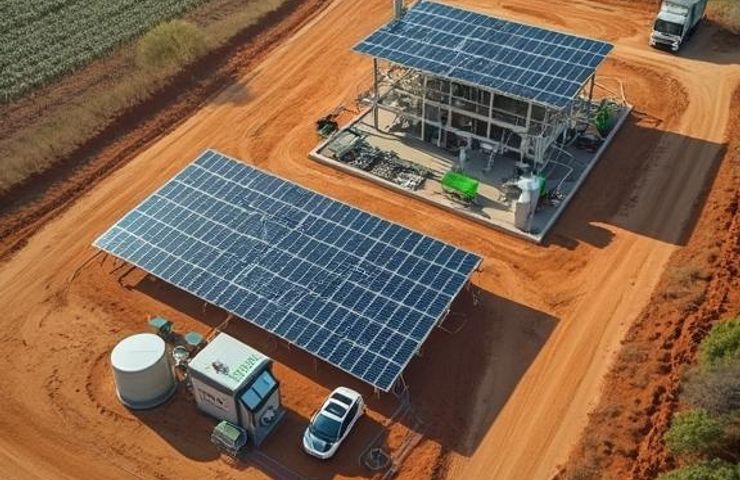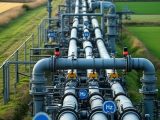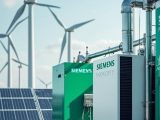
Hydrogen Production Heads to the Farm: GEGHA Project Powers Agriculture with Clean Ammonia
July 23, 2025The Good Earth Green Hydrogen and Ammonia (GEGHA) project is more than just another flashy green energy initiative. It’s a boots-on-the-ground effort to tackle a real and expensive headache for Aussie farmers—reliance on fossil fuel-based fertilisers and diesel.
The Hard Facts
Backed by Hiringa Energy and Sundown Pastoral Company, GEGHA is setting up shop near Moree, New South Wales, at Sundown’s Wathagar site. The plan? A 36 MW solar farm, a 15 MW electrolyser, and a 41 MWh battery working together to churn out some 4,500 tonnes of green ammonia and several hundred tonnes of green hydrogen each year. Construction kicks off in July 2025.
It’s getting serious backing too—National Australia Bank (NAB) is providing the financing, while the NSW Government is throwing in both funding and policy support. Construction duties fall to Dialog Fitzroy, a contractor with real experience in regional builds.
What It Means
Australia is still hooked on high-emission, imported fertilisers—bad for the climate and risky for farmers when overseas markets get shaky. GEGHA flips that dynamic by producing clean ammonia and green hydrogen here at home. That’s a win for price stability, emissions tracking, and making our ag sector more self-reliant.
Let’s be real: no one’s pouring millions into this just to feel warm and fuzzy. The aim is scalability. If this works, we’ll see it rolled out across regional Australia. That dream of hitting 20,000 tonnes a year? It’s not just talk—it’s the playbook.
Why It Works (Or Could)
What sets GEGHA apart from a bunch of other hydrogen production plans is how specific it is. This isn’t some vague attempt at decarbonization. It’s laser-focused on agriculture. Farms like Sundown’s are heavy users of fertiliser and diesel-powered irrigation. GEGHA aims to replace both—some of the green hydrogen will even run pumps and local transport. That’s integration with a capital “I.”
And here’s the kicker: it packs the potential to cut up to 17,000 tonnes of CO₂-equivalent emissions per year. That’s not fluff—it’s measurable, hard-nosed carbon impact.
The Risk Ledger
Of course, it’s not all sunshine and solar arrays. Green hydrogen projects don’t come cheap, and they’re sensitive to policy wobbles. This one needs long-term government backing, and growing demand for clean, local ammonia. If farmers don’t switch from their cheaper, conventional options, things could stall fast.
Who’s Betting Big
Hiringa Energy isn’t new to the game—they’re already active on the trans-Tasman hydrogen logistics front and are now doubling down with serious infrastructure. Their partner, Sundown Pastoral, isn’t just talking a big sustainable game—they’ve backed it with a public commitment to low-carbon, traceable cotton. That kind of branding makes a real difference when choosing fertilisers, and it builds in reliable demand.
Then there’s NAB, bringing the banking power with a focus on sustainable agri-lending. The NSW Government sees itself as a driver of the climate economy. There’s shared vision here—and in a project like this, that alignment really matters.
The Bigger Picture
Let’s face it: the old-school fossil-fuel-driven fertiliser model is broken. It’s volatile, carbon-heavy, and tied to unpredictable global politics. GEGHA presents a homegrown fix—local jobs, cleaner operations, and a supply chain exporters will love.
And it’s not just another starry-eyed decarbonization scheme. This is a closed-loop system designed for actual, local use. That makes it stand apart from some of the more speculative hydrogen hubs out there that look great on paper but lack real-world traction.
One Last Thought
If tomorrow’s supply chains are judged by the carbon footprint of every molecule, then projects like GEGHA might just be where the next agricultural revolution kicks off—not in shiny corporate labs, but on dusty regional roads near Moree, where clean energy meets real farm needs.



 With over 15 years of reporting hydrogen news, we are your premier source for the latest updates and insights in hydrogen and renewable energy.
With over 15 years of reporting hydrogen news, we are your premier source for the latest updates and insights in hydrogen and renewable energy.
Hi Bret
15Mw electrolysers will produce 2,6 tons of H2 per day assuming 8 hours photovoltaic supplies
How much Amonnia is expected per day ?
How hydrogen is stored on site ?
i am looking to do this for individual home power operation can you talk to me about this as i am interested